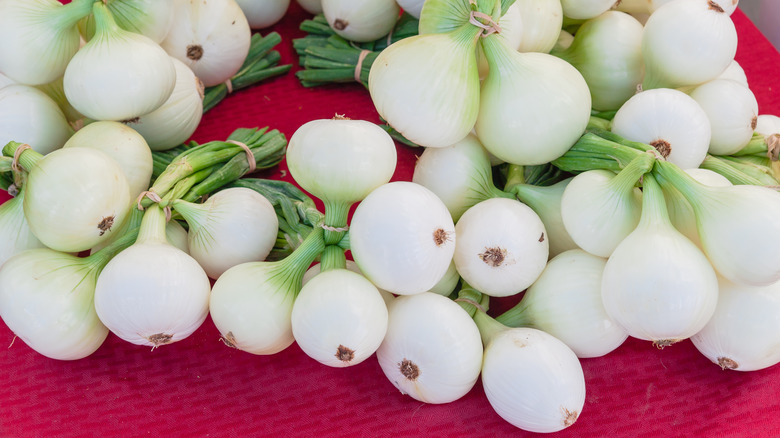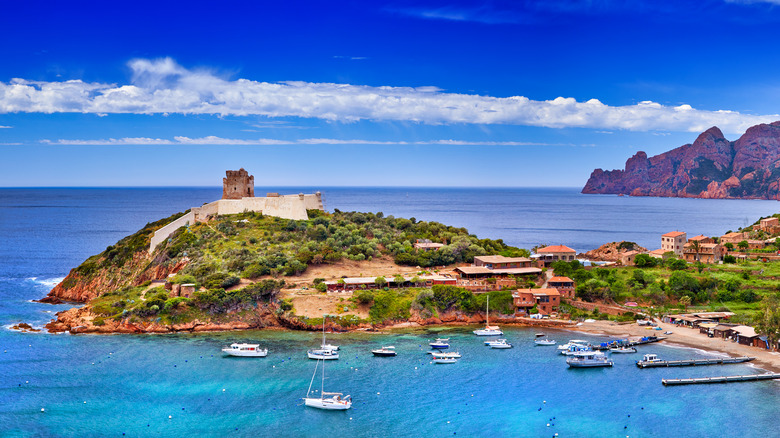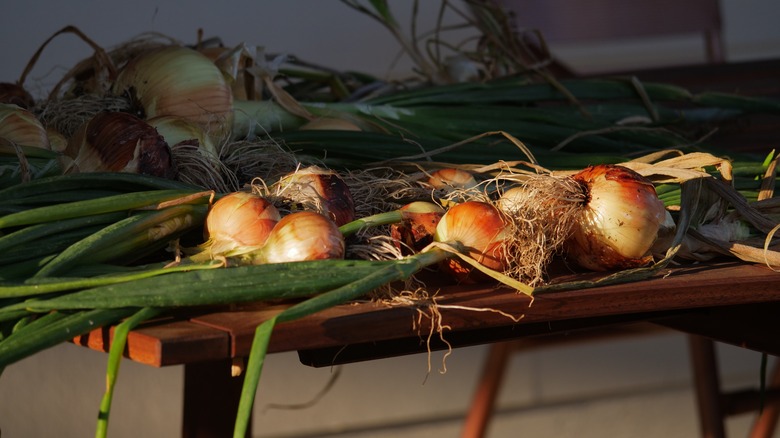Walla Walla Onions Actually Originated On A European Island
Whether yellow, white, sweet, or red, choosing the right onion can feel a bit like solving a mystery. If you prefer sweet onions, though, then you might want to skip all the sleuthing and simply opt for Walla Walla onions. These large, round, mild veggies — the result of growing in a sulfur-light environment with hot days and chill nights — have made quite a name for themselves.
In fact, the U.S. government says only onions grown in the Walla Walla Valley of Washington State and nearby northeast Oregon can be marketed as Walla Walla onions. Just about two dozen farms spread over roughly a thousand acres actually qualify, and official stickers mark authentic examples. On top of that, Washington has even dubbed them its state vegetable.
The moniker of "Walla Walla" originates from an indigenous American language; the term translates to "many waters," reflecting the nature of this crop's growing region. However, the onion variety itself is European in origin. More specifically, it stems from the island of Corsica, France. Indeed, Walla Walla onions — tasting great uncooked in salads and on sandwiches during their summer season — can seem quite wondrous. Unlike the onion-choosing process, however, there's nothing mystifying about them.
Corsica, France provided Walla Walla's onions
The expansive island of Corsica lies in the Mediterranean Sea off the coast of Europe, particularly near France and Italy. Although quite mountainous, its landmass also features fertile river valleys with a rainy, Mediterranean climate that enables lush plant life. This results in alpine forests and flowery underbrush, earning the island a reputation as an aromatic garden. However, crops like citrus, grapes, and olives are also present there, not to mention — of course — sweet onions. (Other agricultural products like milk and cheese are fairly common, as well.)
Human occupation of Corsica dates back at least 5,000 years, and since then, it's come under the control of many nations, like the Roman Empire. By 1769, though, Corsica became a part of France, which it remains to this day (with only brief pauses, like during World War II). As such, it was a Frenchman named Peter Pieri who had the opportunity to bring a sweet onion seed from Corsica to modern day Washington State, back in the late 19th century. Surprisingly, though, Walla Walla onions are not just French and American — they're also Italian!
Italian immigrants championed Walla Walla onions
For thousands of years, indigenous American peoples like the Cayuse, Umatilla, and Walla Walla lived in what is now the city of Walla Walla. There, they fished salmon, gathered berries, and hunted deer. European colonizers began to arrive in the area around the start of the 1800s. By the end of the 19th century, Italians were one of the more populous groups among this region's newcomers, and some of them worked for another fresh arrival: Peter Pieri.
Other agricultural trends also took root: Walla Walla has winning wines, and wheat has long been a cash crop there. Regardless, Pieri's sweet onions especially caught on, due in part to those Italian American families who farmed alongside him and adopted his crop. It didn't hurt that his sweet onions were a hardy, cold-resistant plant. This allowed them to flourish in Walla Walla, a forest oasis — surrounded by arid deserts — which still receives several inches of snow during wintertime.
Nevertheless, the "Walla Walla sweet onion" name didn't emerge until the 1960s, as part of one company's marketing campaign to increase sales over on the East Coast. Nowadays, Walla Walla onions are iconic, luxurious, and respected. There's even an annual Walla Walla Sweet Onion Festival that celebrates this success. It's a sweet victory for Washingtonians, but none of it would be possible if it weren't for the French, the Italians, and of course the ancestral land of indigenous Americans.


